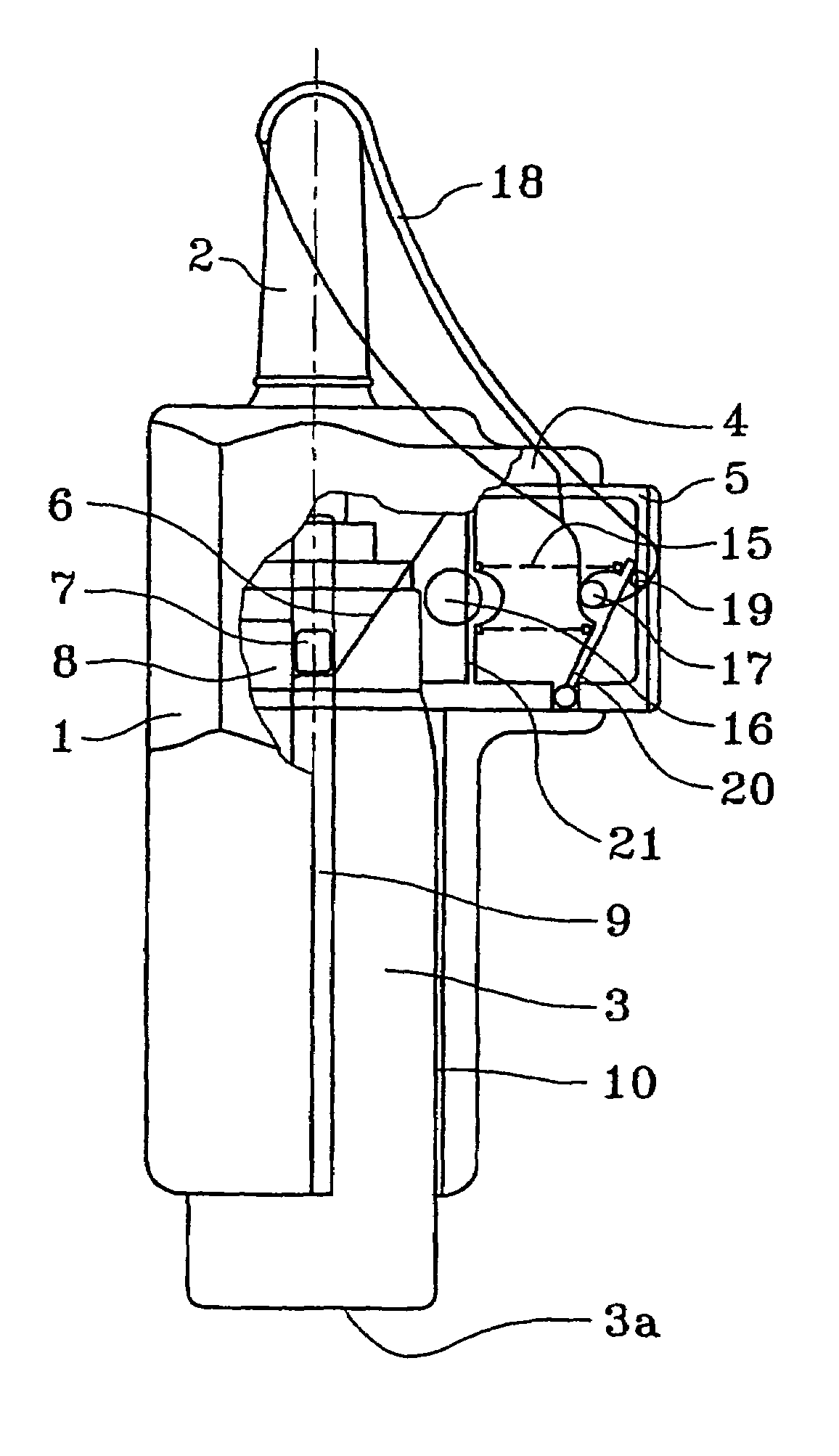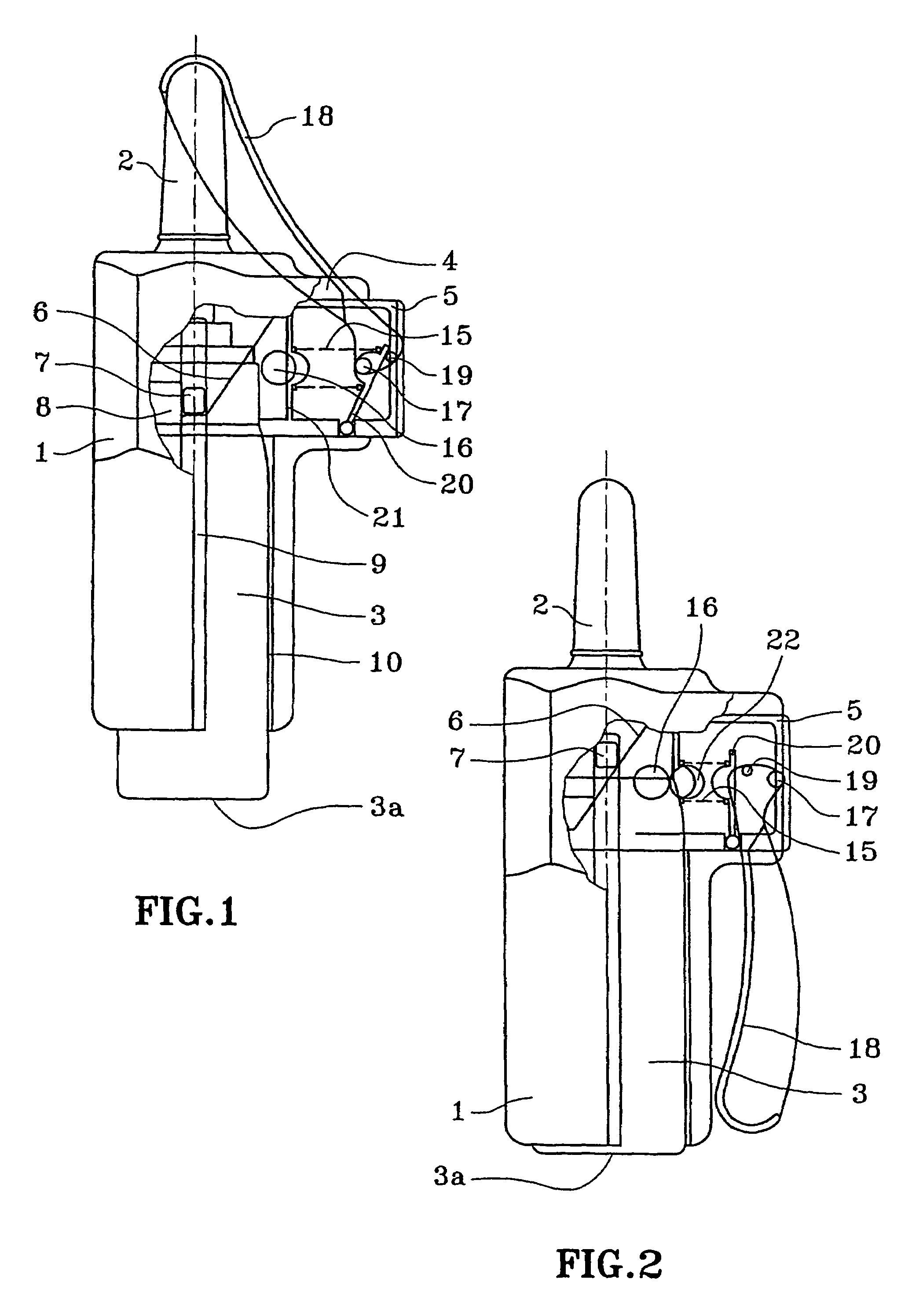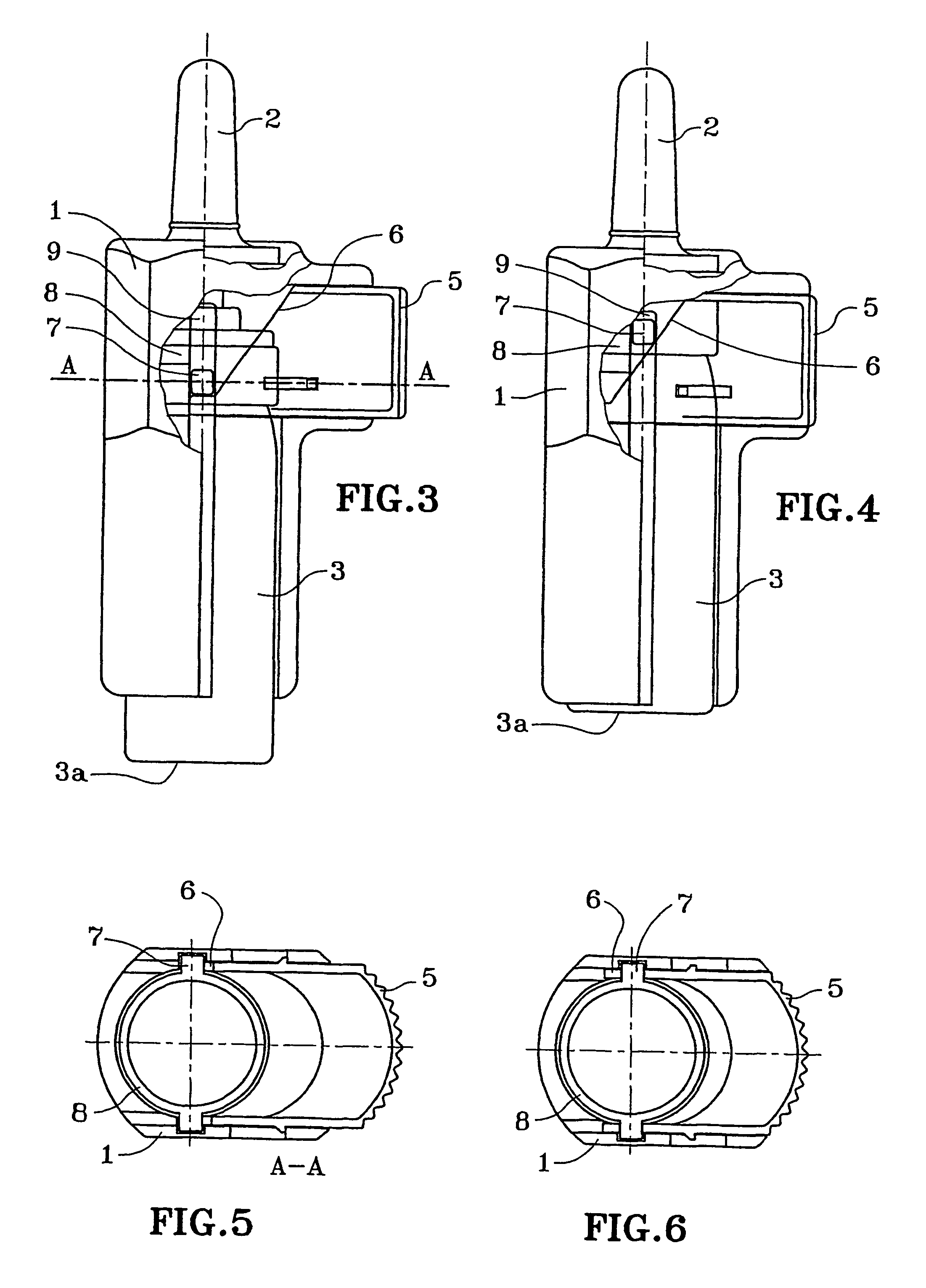Fluid dispenser device of the multi-dose type
a dispenser device and multi-dose technology, applied in the direction of liquid transfer devices, instruments, single-unit apparatuses, etc., can solve the problems of not being able to implement a standard assembly method, all existing lateral actuator systems do not solve problems, and the system suffers from numerous problems, etc., to achieve simple and inexpensive manufacturing and assembly, and excellent spray quality
- Summary
- Abstract
- Description
- Claims
- Application Information
AI Technical Summary
Benefits of technology
Problems solved by technology
Method used
Image
Examples
first embodiment
[0029]In a first embodiment shown in FIGS. 1 and 2, the force-regulating means comprise resilient means such as a spring 15 which co-operates with the actuating element 5 to urge it towards its actuating position when the spring is compressed. The force-regulating means further include trigger means 16 that are preferably implemented in the form of one or more side buttons. The buttons 16 retain the actuating element in the rest position (shown in FIG. 5) against the force exerted by the spring 15, until the user presses on the buttons 16 to release the locking of the actuating element 5, thereby enabling it to move into its actuating position under the effect of the resilient force of the spring 15, and thus to move the reservoir 3 relative to the piston of the pump to deliver a dose. It is thus the characteristics of the spring 15 that determine the force exerted by the actuating element on the pump, and therefore the actuating force on the pump is independent of the force exerted...
second embodiment
[0032]In FIGS. 3 to 6, a second embodiment is shown that differs from the embodiment shown in FIGS. 1 and 2 in that the device does not have the pre-compressible resilient means for exerting a force on the actuating element 5 during actuation of the device. In the example shown in FIGS. 3 to 6, the force exerted by the user on the lateral actuating element 5 is directly transformed into a force for axially moving the piston of the pump by the slope 6 forming the cam surface and co-operating with the peg 7 integral with the fixing ring 8. In this embodiment, the force-regulating means may be implemented in the form of a varying gradient of said sloping surface 6. During the actuating stroke, pumps generally change their resistance, and therefore the force required for actuation. Such increases in resistance during the stroke take place sometimes constantly, and sometimes very quickly. An appropriate variation in the inclination of the cam surface 6 can fully compensate for such incre...
PUM
 Login to View More
Login to View More Abstract
Description
Claims
Application Information
 Login to View More
Login to View More - R&D
- Intellectual Property
- Life Sciences
- Materials
- Tech Scout
- Unparalleled Data Quality
- Higher Quality Content
- 60% Fewer Hallucinations
Browse by: Latest US Patents, China's latest patents, Technical Efficacy Thesaurus, Application Domain, Technology Topic, Popular Technical Reports.
© 2025 PatSnap. All rights reserved.Legal|Privacy policy|Modern Slavery Act Transparency Statement|Sitemap|About US| Contact US: help@patsnap.com



